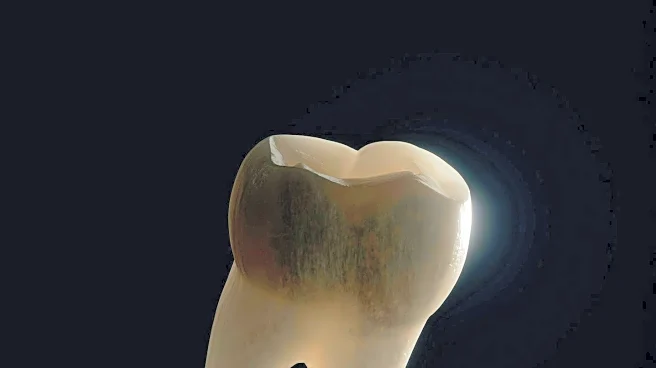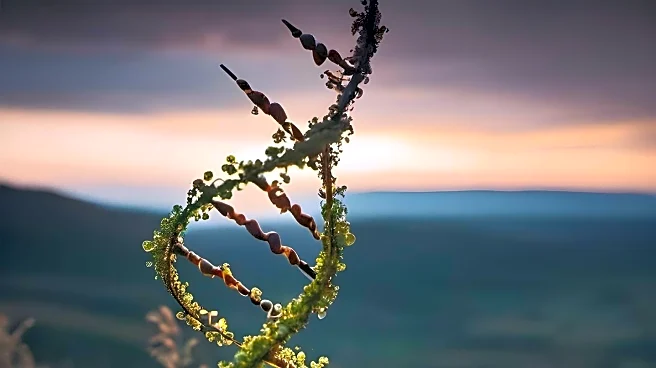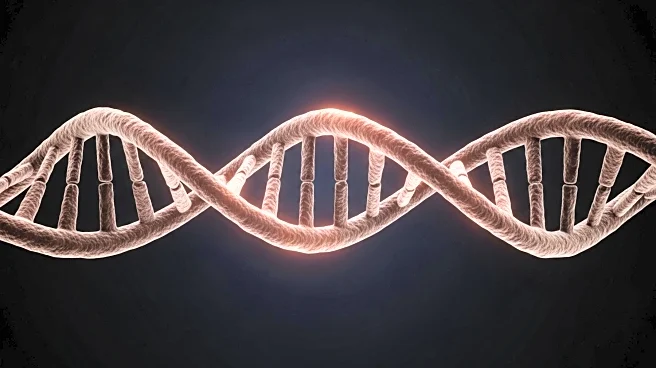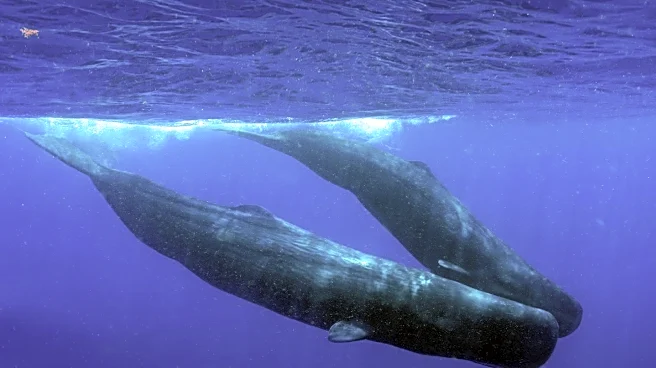What is the story about?
What's Happening?
Researchers from the Wellcome Sanger Institute have discovered that harmful genetic mutations in sperm cells become more prevalent as men age. The study, which utilized sperm samples from the TwinsUK cohort, found that the likelihood of passing on a harmful genetic variant increases with paternal age. Using advanced DNA sequencing methods, the researchers identified that around 1 in 50 sperm from men in their early 30s have potentially harmful mutations, which rises to about 1 in 20 by age 60. The study highlights that some mutations provide sperm-producing stem cells with a growth advantage, leading to an increased presence of these mutations in older men. The findings suggest that fathers conceiving later in life may unknowingly have a higher risk of passing on disease-causing mutations to their children.
Why It's Important?
The study's findings have significant implications for reproductive health and genetic risk assessment. As men age, the increased prevalence of harmful mutations in sperm could lead to a higher risk of inherited diseases in their offspring. This research underscores the importance of understanding how genetic variations occur and are influenced by paternal age, potentially impacting public health policies and reproductive advice. The study also opens avenues for exploring how lifestyle and environmental factors may affect genetic risks passed to future generations, which could lead to improved strategies for mitigating these risks.
What's Next?
The researchers aim to further investigate how environmental and lifestyle factors influence genetic risks in sperm, potentially leading to better reproductive risk assessments. Additionally, related studies are examining the phenomenon from different perspectives, such as mutations already passed on to children, to corroborate these findings. The ongoing research may provide insights into the earliest steps of cancer development and the role of mutations in healthy tissue, contributing to a broader understanding of genetic risks associated with aging.
Beyond the Headlines
The study challenges the assumption that the male germline is well protected due to its low mutation rate. Instead, it reveals that the male germline is a dynamic environment where natural selection can favor harmful mutations, sometimes with consequences for the next generation. This insight could lead to a reevaluation of how genetic risks are perceived and managed in reproductive health.
AI Generated Content
Do you find this article useful?













